Advertisement

Impact of predicted climate change on landslide reactivation: case study of Mam Tor, UK
- Original Article
- Published: 03 January 2007
- Volume 4 , pages 137–147, ( 2007 )
Cite this article

- Neil Dixon 1 &
- Edmond Brook 2
4149 Accesses
69 Citations
3 Altmetric
Explore all metrics
Global change is expected to result in worldwide increases in temperature and alteration of rainfall patterns. Such changes have the potential to modify stability of slopes, both natural and constructed. This paper discusses the potential effect of global climate change on reactivation of landslides through examination of predicted changes in rainfall pattern on the active landslide at Mam Tor, Derbyshire, UK. This landslide is of Pleistocene origin and is crossed by a road that is now abandoned. Damaging winter movement is known to occur when precipitation reaches both 1-month triggering and 6-month antecedent thresholds. Return periods for threshold exceedence is modelled statistically, and the climate change data from the UKCIP 2002 report (Hulme et al. 2002 ) is applied to this model. For the predicted changes in precipitation, it is shown that the instability threshold could decrease from 4 to 3.5 years by the 2080s for the medium–high climate change scenario. However, predicted temperature changes could influence the response of the landslide through increased evapotranspiration leading to a change in the triggering precipitation thresholds, and this will help counter the impact of changes in precipitation. Analysis of sources of uncertainty in the model has been used to establish the factors that contribute to the predicted changes in stability. Assessment of these factors can provide an indication of the potential impact of climate change on landslides in other areas of the UK.
This is a preview of subscription content, log in via an institution to check access.
Access this article
Price includes VAT (Russian Federation)
Instant access to the full article PDF.
Rent this article via DeepDyve
Institutional subscriptions
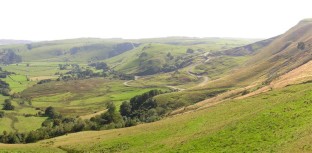
Similar content being viewed by others

Urbanization impacts on flood risks based on urban growth data and coupled flood models

Effect of climate change on the flooding of storm water networks under extreme rainfall events using SWMM simulations: a case study

Current Crisis and Future Woes: The Case of Climate Change in the Drakensberg Mountains Region of Southern Africa and Its Socio-economic Impacts in the Region
Buma J (2000) Finding the most suitable slope stability model for the assessment of the impact of climate change on a landslide in SE France. Earth Surf Proc Landf 25:565–583
Article Google Scholar
Chowdhury R, Flentje P (2002) Uncertainties in rainfall-induced landslide hazard. Q J Eng Geol Hydrogeol 35:61–69
Collison A, Wade S, Griffiths J, Dehn M (2000) Modelling the impact of predicted climate change on landslide frequency and magnitude in SE England. Eng Geol 55:205–218
Corominas J, Moya J (1999) Reconstructing recent landslide activity in relation to rainfall in the Llobregat river basin, Eastern Pyrenees, Spain. Geomorphology 30:79–93
Dehn M, Burger G, Buma J, Gasparetto P (2000) Impact of climate change on slope stability using expanded downscaling. Eng Geol 55:193–204
Fiorillo F, Guadagno FM (2000) Analysis of rainfall triggering reactivations of a large landslide in Pleistocene Clay in Molise (Italy). In: Bromhead E, Dixon N, Ibsen M-L, Cardiff (eds) Proceedings of the 8th international symposium on landslides, pp 553–558
Hulme M, Jenkins GJ, Lu X, Turnpenny JR, Mitchell TD, Jones RG, Lowe J, Murphey JM, Hassell D, Boorman P, McDonald R, Hill S (2002) Climate change scenarios for the United Kingdom: the UKCIP02 scientific report. Centre for Climate Change Research, School of Environmental Sciences, University of East Anglia, Norwich
Google Scholar
Mayes J (1996) Spatial and temporal fluctuations of monthly rainfall in the British Isles and variations in the mid-latitude westerly circulation. Int J Climatol 16:585–509
Rutter EH, Arkwright JC, Holloway RF, Waghorn D (2003) Strains and displacements in the Mam Tor landslip, Derbyshire, England. J Geol Soc 160:735–744
Shaw EM (1994) Hydrology in practice, 3rd edn. Chapman & Hall, London
Skempton AW, Leadbeater AD, Chandler RJ (1989) The Mam Tor landslide, Derbyshire. Philos Trans R Soc Lond A329:503–547
van Beek R (2002) Influence of environmental change on landslide activity. Netherlands Geological Studies 294, University Utrecht
Waltham AC, Dixon N (2000) Movement of the Mam Tor landslide, Derbyshire, UK. Q J Eng Geol Hydrogeol 33:105–123
Wilks DS (1995) Statistical methods in the atmospheric sciences: an introduction. Academic, San Diego
Download references
Acknowledgements
Thanks are due to Dr Tony Waltham, Dr Tom Dijkstra and Bob Elson for their helpful comments during the preparation of the manuscript.
Author information
Authors and affiliations.
Department of Civil and Building Engineering, Loughborough University, Leicestershire, LE11 3TU, UK
Scott Wilson Ltd., Royal Court, Basil Close, Chesterfield, Derbyshire, S41 7SL, UK
Edmond Brook
You can also search for this author in PubMed Google Scholar
Corresponding author
Correspondence to Neil Dixon .
Rights and permissions
Reprints and permissions
About this article
Dixon, N., Brook, E. Impact of predicted climate change on landslide reactivation: case study of Mam Tor, UK. Landslides 4 , 137–147 (2007). https://doi.org/10.1007/s10346-006-0071-y
Download citation
Received : 14 June 2006
Accepted : 11 October 2006
Published : 03 January 2007
Issue Date : May 2007
DOI : https://doi.org/10.1007/s10346-006-0071-y
Share this article
Anyone you share the following link with will be able to read this content:
Sorry, a shareable link is not currently available for this article.
Provided by the Springer Nature SharedIt content-sharing initiative
- Slope instability
- Rainfall threshold
- Climate change
- United Kingdom
- Find a journal
- Publish with us
- Track your research
Academia.edu no longer supports Internet Explorer.
To browse Academia.edu and the wider internet faster and more securely, please take a few seconds to upgrade your browser .
Enter the email address you signed up with and we'll email you a reset link.
- We're Hiring!
- Help Center

Aerial photography and digital photogrammetry for landslide monitoring

2007, Geological Society, London, Special Publications
A review is given of the techniques that are available to extract relevant information from multi-temporal aerial photographs for use in the monitoring stage of landslide assessments. It is shown that aerial photograph interpretation reveals qualitative information on surface characteristics, which is helpful in detecting landslide features and inferring the mechanisms involved. Photogrammetrically derived products can be used to quantify these processes, providing distinctive advantages. Comparison of digital elevation models (DEMs) from different times provides detailed information on changes in surface topography, whereas orthophotos can be used to measure horizontal displacements. The various factors influencing the quality of the products are also identified. Examples from a case study on the Mam Tor landslide are used to illustrate the benefits of the different approaches.
Related Papers
PaoloBaldi Baldi
ozgur demir
Quarterly Journal of Engineering Geology and Hydrogeology
Jan Walstra
This paper demonstrates the value of historical aerial photographs for assessing long-term landslide evolution. The study focused on two case histories, the Mam Tor and East Pentwyn landslides. In both case histories we explored the variety of data that could be derived relatively easily using an ordinary PC desktop, commercially available software and commonly available photographic material. The techniques to unlock qualitative and quantitative data captured in the photographic archive were based on the principles of aerial photo-interpretation and photogrammetry. The products created comprised geomorphological maps, automatically derived digital elevation models (DEMs), displacement vectors and animations. The measured horizontal displacements of the Mam Tor landslide ranged from 0.09 to 0.74 m a−1 between 1953 and 1999, which was verified by independent survey data. Moreover, the observed displacement patterns were consistent with photo-interpreted geomorphological information. The photogrammetric measurements from the East Pentwyn landslide (horizontal displacements up to 6 m a−1 between 1971 and 1973) also showed a striking resemblance to independent data. In both case histories, the vertical accuracy was insufficient for detecting significant elevation changes. Nevertheless, DEMs proved to be a powerful tool for visualization. Overall, the results in this study validated the techniques used and strongly encourage the use of historical photographic material in landslide studies.
In proceeding of: 11th International & 2nd North American Symposium on Landslides, At Banff, Canada
Uros Djuric
Aerial photography is a very powerful tool for monitoring of slow moving landslides over periods lasting for decades. They offer a synoptic view of landslide morphology and activity changing at different time intervals. This case study focused on Umka landslide. The availability of multi-year aerial photo and orthophotos coverage helped to assess morphological changes, which occurred in the last forty years. The morphological changes have been revealed from aerial images from 1970–2007 period and orthophotos that were taken in 2001, 2005 and 2010. Comparing archived results with field investigations we found that the south-western part of landslide is most active part, with surface moving greater than 20 m. In this paper we presented an example where aerial photographs and digital photogrammetric techniques were used for tracking and modelling the slow moving landslide displacement of Umka landslide (Belgrade, Serbia).
Renaud Toussaint
The International Conference on GeoInformation For Disaster Management (Gi4DM'11), Antalya, Turkey, May 3-8 (only on CD-ROM).
Devrim Akca
KEY WORDS: Photogrammetry, simulation, network design, landslide, digital camera, point tracking. ABSTRACT: According to pre-planned schedules, a series of two artificial rainfall events were applied to a forested slope in Ruedlingen, northern Switzerland. The experiments were conducted in autumn 2008 and spring 2009, the second of which resulted in mobilising about 130 m3 of debris. Both experiments were monitored by a photogrammetric camera network in order to quantify spatial and temporal changes. A 4-camera arrangement was used for the image acquisition. The cameras operated at a data acquisition rate of circa 8 frames per second (fps). Image measurements were made using the Least Squares image matching method, which was implemented in an in-house developed software package (BAAP) to compute 3D coordinates of the target points. The surface deformation was quantified by tracking the small (ping-pong and tennis) balls pegged into the ground. The average 3D point-positioning precision of ±1.6 cm was achieved in the first experiment and ±1.8 cm in the second experiment.
International Archives of Photogrammetry, Remote Sensing and Spatial Information Sciences
A sequence of historical aerial photographs captures morphological change, which can only be unlocked by using appropriate photogrammetric methods. There are several challenges: initially it is necessary to trace and acquire suitable imagery in an appropriate format; typically there is a lack of precise photo-control available at the time of photography and similarly, it is rare to have access to the original camera calibration certificate. Furthermore, it is essential to assess the quality of the extracted morphological data. Once these challenges have been overcome, such morphological change data can be used to develop landslide evolutionary models, which can be related to localised climate change. This paper describes the use of modern digital photogrammetric methods to extract high-resolution digital elevation models (DEMs) and orthophotographs using historical photography. Initial results from a case study at Mam Tor (Derbyshire, UK) show the potential of the methods to quantify past landslide movements. Photographs from four different epochs (1953, 1971, 1973 and 1990), of varying scale and quality, were processed. Difficulties caused by limited ground control and limited camera calibration data were solved by differential GPS and self-calibrating bundle adjustment methods. The quality of the data was at an adequate level to extract ground movements that were consistent with observations by other authors. A more detailed analysis of the displacements in both vertical and horizontal directions is expected to increase the understanding of the mechanics of the landslide. This is an ongoing research project in which these dated spatial data will be used to relate landslide evolution to climate change.
Landslides: Evaluation and Stabilization
Recent developments in digital photogrammetry allow high resolution quantitative data to be extracted. This paper will present the digital techniques used to extract morphological change from a time series of historical aerial photographs. Initial results from a case-study at Mam Tor (Derbyshire, UK) show the potential of the methods to quantify past landslide movements. Photographs from 1958 and 1971 were used to create digital elevation models and orthophotographs and used for the analysis. Due to the poor geometry of one set of images the vertical accuracy was rather low. But, in spite of the low resolution, significant horizontal movements could be detected and these were consistent with observations from other researchers. Incorporation of additional epochs will extend the series and improve accuracies. This research is part of an ongoing project to model the response of landslides to future climate change.
mirco motta
The Photogrammetric Record
Sarah Springman
RELATED PAPERS
vu vungoctoi
1130017050 WINDA GREENA FEBRIANI
Tugas Makalah Materi Akuntansi BIaya (2)
Arimas Afidh Syahputra
Frontiers in Plant Science
Denis Coulon
Journal of Photopolymer Science and Technology
Hiroshi Fukumura
Proceedings of the IEEE
Isaurinda Baptista
Sarah Toogood
Materials Letters
Ahmed Ibrahim
RadioGraphics
Sajjad Hussain
Revista de historia de El Puerto
José Marchena
IEEE Access
Dr. Adarsh Kumar
Health Research Policy and Systems
Francesco Panese
siti Rustiana
Cirugía y Cirujanos
Mauricio Tapia Salazar
Héctor Palma
Jaime Paneque Carmona
Journal of medical imaging and radiation oncology
Maaz Ghouri
The Journal of Academic Social Science Studies
hatice güzel
hjhfggf hjgfdf
Chemischer Informationsdienst
Robert J G Sobott
Rhomeo Porto
Hydrobiologia
Zhi-Ping Mei
Juan I Piovani
Tarım Bilimleri Dergisi
Tarim Bilimleri

RELATED TOPICS
- We're Hiring!
- Help Center
- Find new research papers in:
- Health Sciences
- Earth Sciences
- Cognitive Science
- Mathematics
- Computer Science
- Academia ©2024

Quick links
- Climate change
- Multiple hazards
- Decarbonisation
Landslide case studies
BGS Research
The landslides team at the BGS has studied numerous landslides. This work informs our geological maps, memoirs and sheet explanations and provides data for our National Landslide Database , which underpins much of our research. If you’ve seen a landslide or want to contact us about landslides, you can email us at [email protected] .
View our landslide case studies
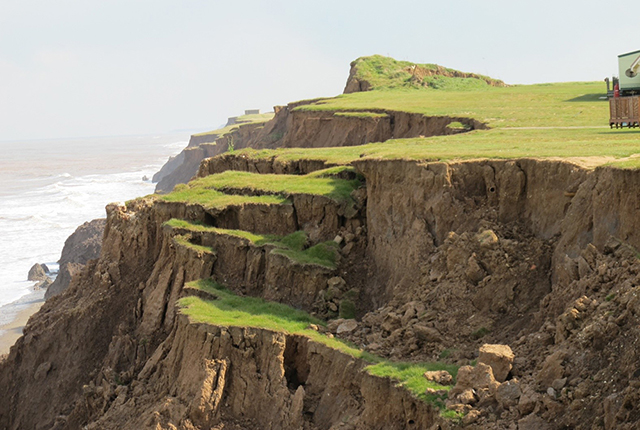
Aldbrough Coastal Landslide Observatory – landslide case study
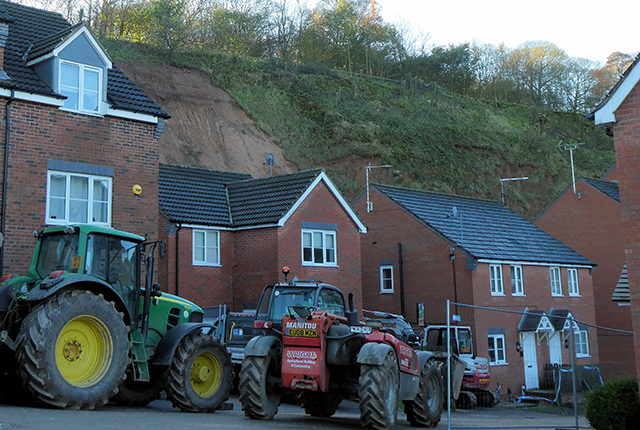
Berry Hill quarry, Mansfield, Nottinghamshire
In 2019, a landslide occurred on a disused former sandstone quarry slope in Mansfield and affected over 35 properties.
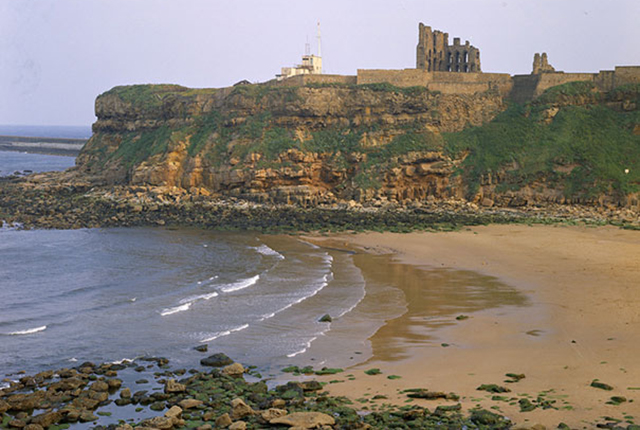
Tynemouth Headland, North Shields
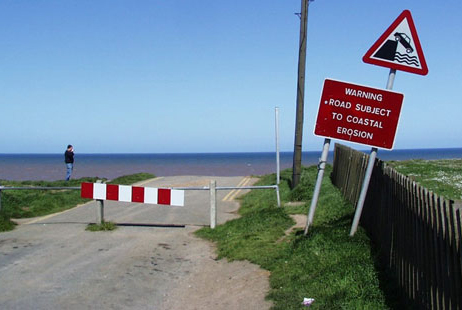
Landslides and coastal erosion at Aldbrough, East Riding of Yorkshire
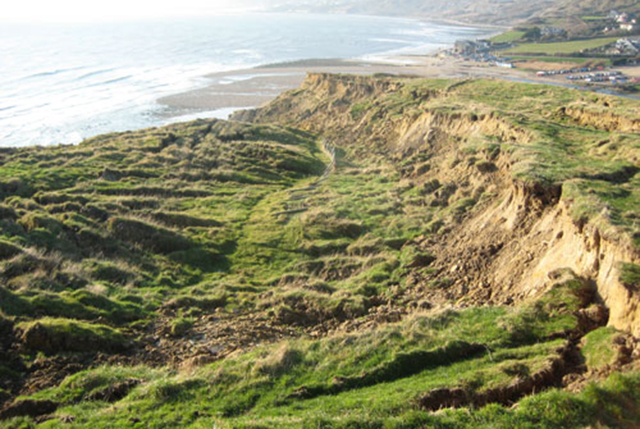
Stonebarrow Hills, Dorset
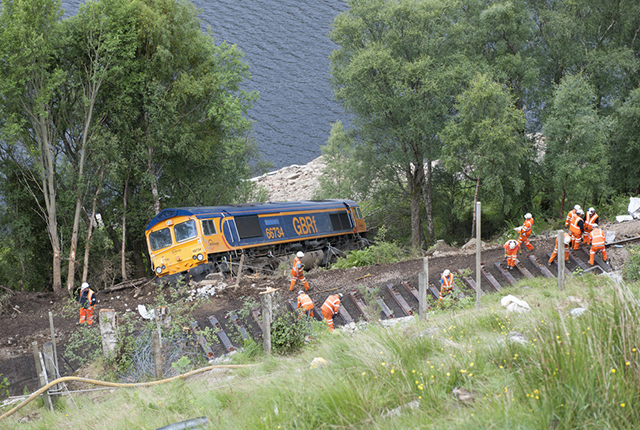
Stob Coire Sgriodain, Highlands
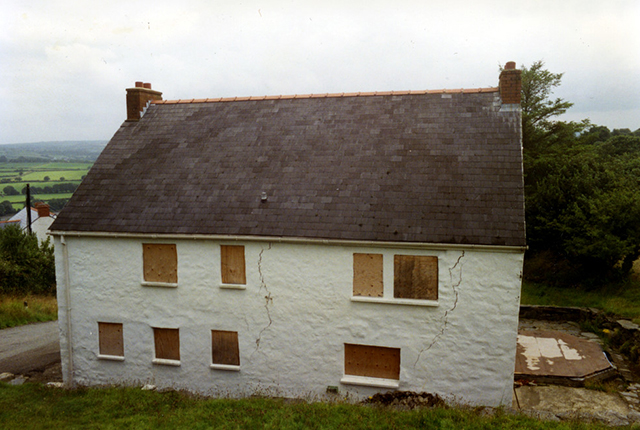
St Dogmaels, Pembrokeshire
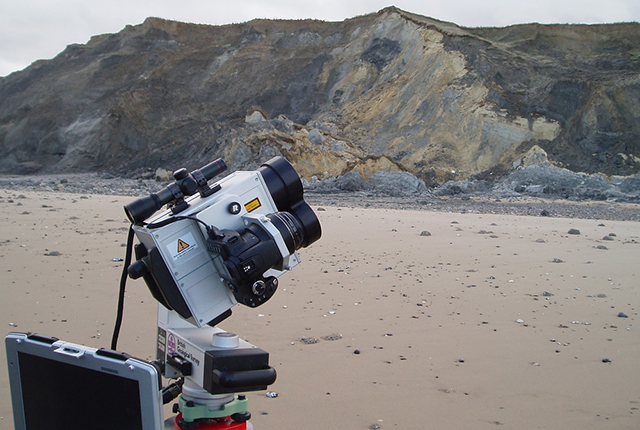
Sidestrand, Norfolk
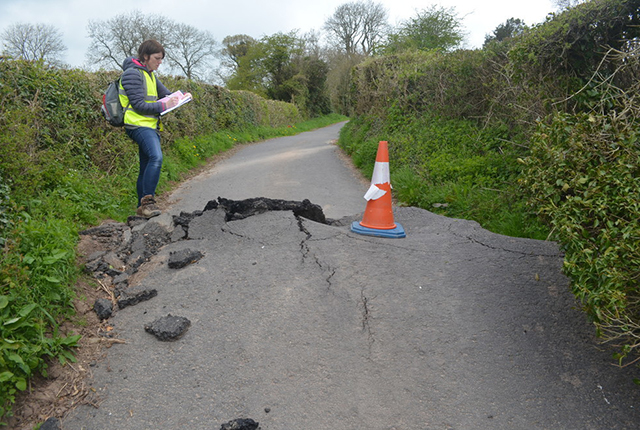
Shortwood Farm, Pencombe, Herefordshire
Contact the landslide response team, you may also be interested in:.
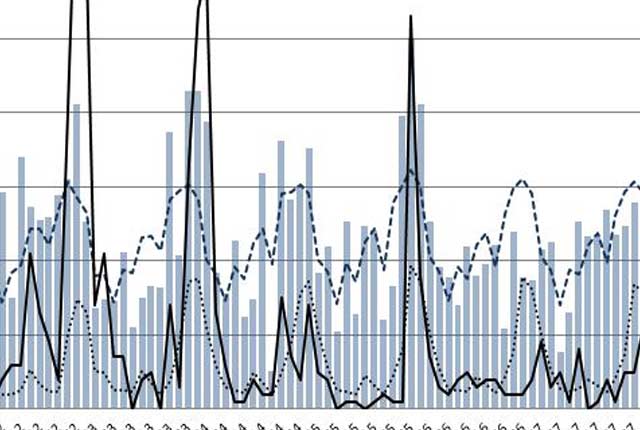
Landslides and rainfall
We combine rainfall statistics and landslide data to produce graphs demonstrating the relationship between landslides and rainfall.
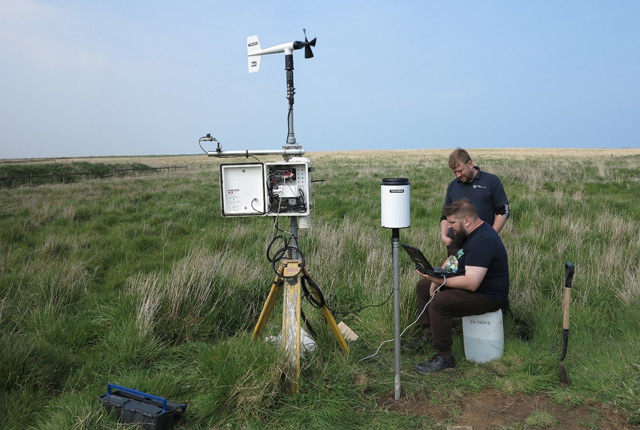
Hazard monitoring
Hazard monitoring provides valuable information for process understanding and for the science required for developing early warning systems to protect people and infrastructure.
Was this page helpful?
How can we make this section better?*
- How can we make this section better? *
Please select a reason*
- Please select a reason * Select reason Didn't answer my question Too confusing Links are broken/Doesn't work

IMAGES
VIDEO
COMMENTS
Contact the Landslide Response Team. Tel: 0115 936 3143 Email: [email protected]. The Mam Tor landslide is easy to access and exhibits classic text-book landslide features so is a good landslide for geologists to study.
The Mam Tor landslide is a kilometre‐long feature in shales and sandstones. The initial slope failure occurred over 4000 years ago as a rotational landslide that developed into a large debris flow at its toe. ... Yu-Chung Hsieh, Deformation of landslide revealed by long-term surficial monitoring: A case study of slow movement of a dip slope ...
This is an angular change of approximately 75° over 500 m and appears to be caused by the frictional drag on movements on the south side of the slide against the limestone spur. Walstra et al. presented a case study at Mam Tor using historical aerial photos to assess the landslide's horizontal movements and evolving morphology. Using a total ...
Global change is expected to result in worldwide increases in temperature and alteration of rainfall patterns. Such changes have the potential to modify stability of slopes, both natural and constructed. This paper discusses the potential effect of global climate change on reactivation of landslides through examination of predicted changes in rainfall pattern on the active landslide at Mam Tor ...
Fig. 1 Photograph of the Mam Tor landslide showing the upper and lower roads crossing the slide and displaced down slope Fig. 2 Map of the Mam Tor landslide and adjacent features (after Waltham and Dixon 2000). The inset shows the location of the site in the UK. The road crosses the middle of the slide mass twice, orientated approximately north-
Request PDF | Impact of predicted climate change on landslide reactivation: Case study of Mam Tor, UK | Global change is expected to result in worldwide increases in temperature and alteration of ...
The ancient but still active landslide at Mam Tor, in Namurian mudstones, is a massive example of a slump-earthflow. It has a length of 1000 m, a maximum width of 450 m, and an average slope of 12° from the toe to the foot of the back scarp. I he upper, ...
The study focused on two case histories, the Mam Tor and East Pentwyn landslides. In both case histories we explored the variety of data that could be derived relatively easily using an ordinary PC desktop, commercially available software and commonly available photographic material. ... The measured horizontal displacements of the Mam Tor ...
The Mam Tor landslide (Derbyshire, England) slips downhill at up to 0.5 m a (1), and offers an excellent opportunity to study time-dependent creep in mudstones under in situ conditions.
Walstra et al. (2007) presented a case study at Mam Tor using historical aerial photos to assess the landslide's horizontal movements and evolving morphology. Using a total of 50 features ...
The Mam Tor landslide (Derbyshire, England) slips downhill at up to 0.5 m a (1), and offers an excellent opportunity to study time-dependent creep in mudstones under in situ conditions.
The creeping Mam Tor landslide (North Derbyshire, UK) is sliding slowly downhill at up to 0.5 m per year. Annual measurements using conventional surveying techniques have shown that creep is exacerbated by periods of heavy rainfall, but to establish a detailed correlation between creep and groundwater levels requires spatially and temporally higher resolution monitoring.
Initial results from a case-study at Mam Tor (Derbyshire, UK) show the potential of the methods to quantify past landslide movements. Photographs from 1958 and 1971 were used to create digital elevation models and orthophotographs and used for the analysis. ... Examples from a case study on the Mam Tor landslide are used to illustrate the ...
Location of the Mam Tor landslide, approximately 2km northwest of Castleton, Derbyshire, (adopted from Varnes 1978, modified after Cripps & Hird 1992). ITINERARY The primary objective of this field trip is to examine the Mam Tor landslide and to gain an overview of some of the many interesting geological features around Castleton (Appendix I).
The Mam Tor landslide is a kilometre‐long feature in shales and sandstones. The initial slope failure occurred over 4000 years ago as a rotational landslide that developed into a large debris flow at its toe. A road built across it nearly 200 years ago, and now closed, provides graphic evidence of continued movement of the slide mass; this has now been monitored for eight years. Current mean ...
The Mam Tor landslide (Derbyshire, England) slips downhill at up to 0.5 m a −1, and offers an excellent opportunity to study time-dependent creep in mudstones under in situ conditions. Annual surveys show that creep rates increase following heavy rainfall, but to establish detailed correlation between creep and pore water pressure required spatially and temporally higher resolution monitoring.
Impact of predicted climate change on landslide reactivation: case study of Mam Tor, UK Dixon, Neil; Brook, Edmond; Abstract. Publication: Landslides. Pub Date: May 2007 DOI: 10.1007/s10346-006-0071-y Bibcode: 2007Lands...4..137D full text sources. Publisher ...
Examples from a case study on the Mam Tor landslide are used to illustrate the benefits of the different approaches. Aerial photographs are a generally accepted tool used in landslide studies. They not only provide a metric model from which quantitative measurements can be obtained, but also give a qualitative description of the Earth surface. ...
This guide provides information to support a one-day field trip to the Mam Tor landslide and Castleton which is situated in the Peak District National Park, North Derbyshire. The village is surrounded by dramatic, often spectacular and rare sites of geological significance and geological interest. Mam Tor forms the highest point in the area and contains the ramparts of a prehistoric hillfort ...
The Mam Tor area (5 km west of Castleton, Derbyshire) is a perennial favourite for field visits by school and university parties and enthusiastic amateurs. As well as displaying the local stratigraphic relationships between the lower Carboniferous limestones and the overlying Edale mudstone/Mam Tor beds sequence, the major slope failure of the ...
The temporal stability and activity of landslides in Europe with respect to climatic change (TESLEC): main objectives and results. Geomorphology, 30, 1-12. CrossRef Google Scholar. Dixon, N. and Brook, E. ( 2007 ). Impact of predicted climate change on landslide reactivation: case study of Mam Tor, UK. Landslides, 4 (2), 137-147.
Landslide case studies. The landslides team at the BGS has studied numerous landslides. This work informs our geological maps, memoirs and sheet explanations and provides data for our National Landslide Database , which underpins much of our research. If you've seen a landslide or want to contact us about landslides, you can email us at ...
The study focussed on two case histories, the Mam Tor and East Pentwyn landslides. In both case histories the variety of data was explored, that could be derived relatively easily using an ...